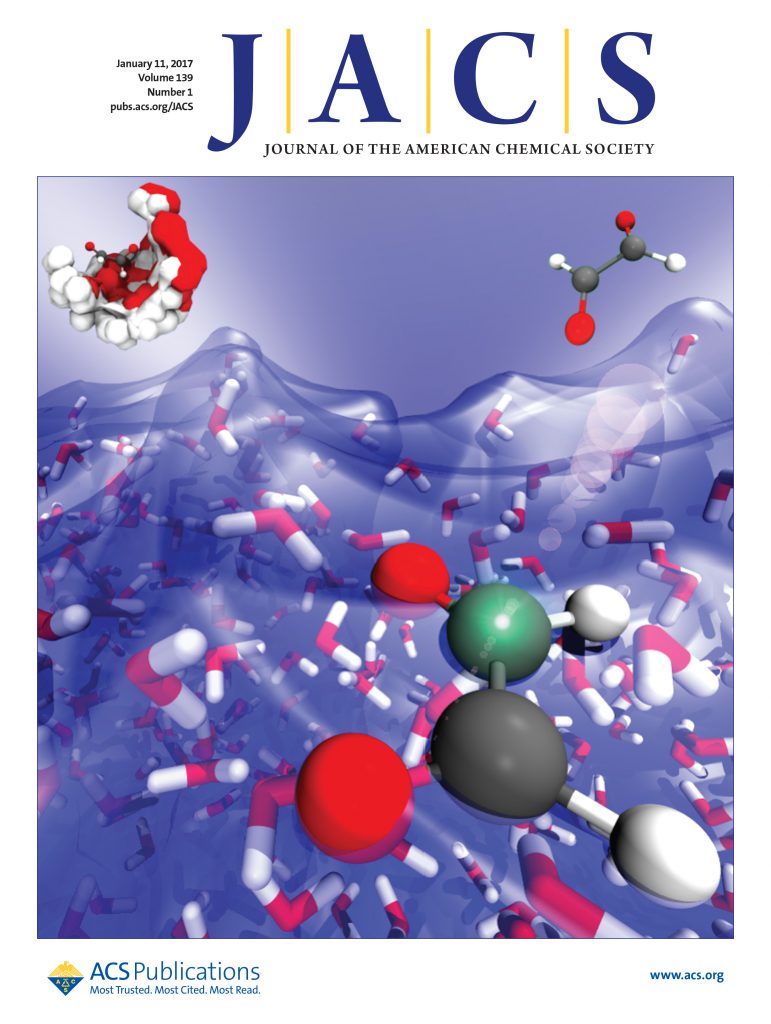Linear Anion Chain-Assembled Nonporous Swelling Molecular Sieve for Benchmark C2–C4 Hydrocarbon Separations
IF 15.6
1区 化学
Q1 CHEMISTRY, MULTIDISCIPLINARY
引用次数: 0
Abstract
Designing ideal materials with simultaneously high selectivity, high capacity, fast kinetics, and moderate regeneration for hydrocarbon separations remains challenging, restricting the advance of nonthermal-driven gas separation technologies. Herein, we reported a nonporous ClO4– -functionalized swelling molecular sieve CuClO4bipy·H2O that is assembled with 1D metal–organic linear chains via water-mediated hydrogen bonding. Destroying the hydrogen-bond network that connects linear chains enables the transformation from nonporous to adaptive porous structures upon gas exposure via chain shift, as indicated by Rietveld refinement of the structure of gas-loaded CuClO4bipy. The easily and rapidly reversible swelling nature of CuClO4bipy enables its fast kinetics and easy regeneration under ambient conditions. Meanwhile, in situ DRIFTS and ex situ Raman experiments reveal that the coordinated ClO4– anions and Cu open metal sites within CuClO4bipy endow the swelling structure with specific recognition ability toward molecules (e.g., acetylene, propyne, and butadiene) while excluding other molecules (e.g., alkanes, alkenes, and carbon dioxide), establishing CuClO4bipy as a new benchmark material for C2–C4 hydrocarbon separation. The work unveils the strategy of swelling molecular sieves with optimal thermodynamic and kinetic behaviors for challenging gas separations.

线性阴离子链组装无孔膨胀分子筛用于基准C2-C4烃分离
设计出同时具有高选择性、高容量、快速动力学和适度再生的碳氢化合物分离理想材料仍然具有挑战性,这限制了非热驱动气体分离技术的发展。本文中,我们报道了一种无孔ClO4 -功能化的膨胀分子筛CuClO4bipy·H2O,该分子筛通过水中介的氢键与一维金属有机线性链组装。破坏连接线性链的氢键网络,可以通过链移位使气体暴露时从无孔结构转变为自适应多孔结构,正如Rietveld对气体负载CuClO4bipy结构的改进所表明的那样。CuClO4bipy的易快速可逆膨胀特性使其在环境条件下具有快速动力学和易于再生的特性。同时,原位DRIFTS和非原位Raman实验表明,CuClO4bipy中ClO4 -阴离子和Cu的配位打开了金属位,使其膨胀结构对乙炔、丙炔和丁二烯等分子具有特异性识别能力,而对其他分子(如烷烃、烯烃和二氧化碳)具有特异性识别能力,从而确立了CuClO4bipy作为C2-C4烃分离新基准材料的地位。这项工作揭示了具有最佳热力学和动力学行为的膨胀分子筛的策略,用于具有挑战性的气体分离。
本文章由计算机程序翻译,如有差异,请以英文原文为准。
求助全文
约1分钟内获得全文
求助全文
来源期刊
CiteScore
24.40
自引率
6.00%
发文量
2398
审稿时长
1.6 months
期刊介绍:
The flagship journal of the American Chemical Society, known as the Journal of the American Chemical Society (JACS), has been a prestigious publication since its establishment in 1879. It holds a preeminent position in the field of chemistry and related interdisciplinary sciences. JACS is committed to disseminating cutting-edge research papers, covering a wide range of topics, and encompasses approximately 19,000 pages of Articles, Communications, and Perspectives annually. With a weekly publication frequency, JACS plays a vital role in advancing the field of chemistry by providing essential research.

 求助内容:
求助内容: 应助结果提醒方式:
应助结果提醒方式:


